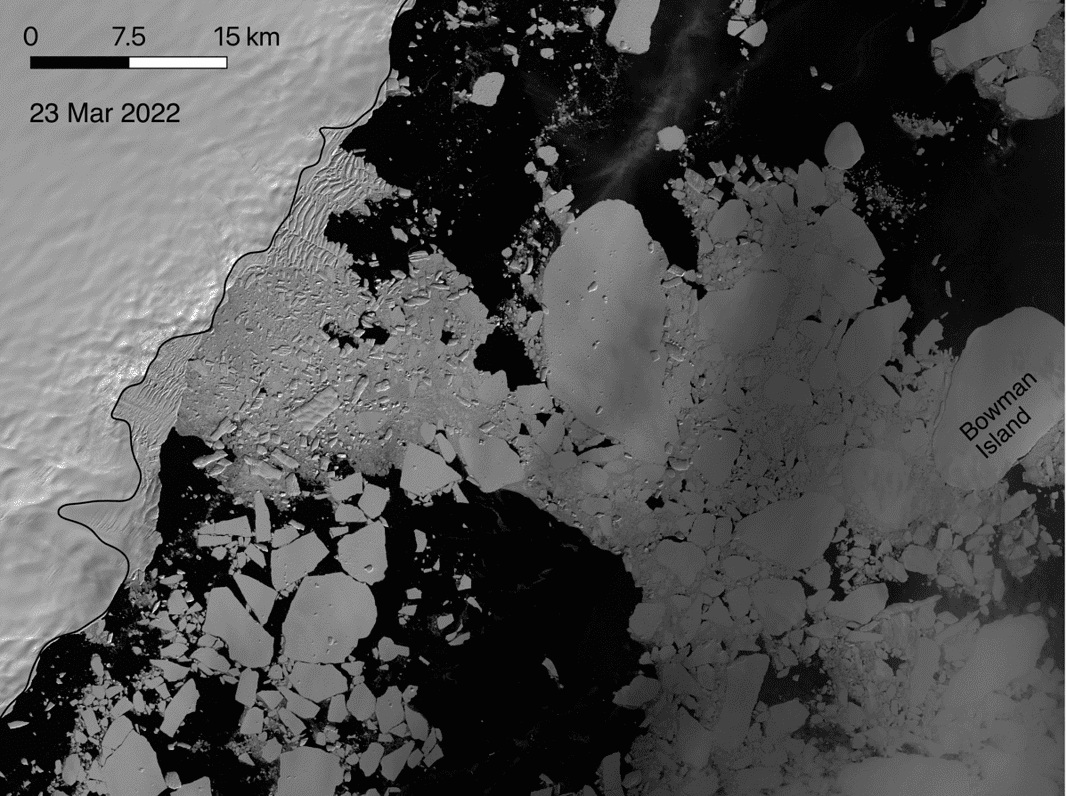Satellite data has confirmed that an ice shelf about the size of Manhattan in New York City has completely collapsed in East Antarctica following days of record-high temperatures.
The Conger Ice Shelf, which had an approximate surface area of 1,200 square km (463 square miles), collapsed around March 15th, scientists confirmed last week.
East Antarctica has recently seen unusually high temperatures, in some cases more than 40C/104F warmer than seasonal norms.
The record temperatures were the result of an atmospheric river that trapped heat over the continent. Atmospheric rivers are a natural phenomenon and aren’t unprecedented events, but they are becoming more common at the poles. Prior to that, it had been undergoing some moderate amount of retreat since at least January 2020, but the total collapse was not predicted, according to the Woods Hole Oceanographic Institution (WHOI).
Catherine Walker, a glaciologist at WHOI said this was a surprise because, while ice shelf collapse is something predicted to happen in West Antarctica (e.g., Thwaites Glacier) East Antarctica is the highest, coldest and driest place in the world and mostly thought of as stable:
“Although the Conger Ice Shelf was relatively small, it is one of the most significant collapse events anywhere in Antarctica since the early 2000s when the Larsen B ice shelf disintegrated, and is most likely, a sign of what might be coming.”
Ice shelf collapse in general is concerning, because ice shelves are basically the “corks” holding back the rest of the Antarctic Ice Sheet from flowing into the ocean. They ring the continent’s coast and serve as buttresses, as a buffer between the (warming) ocean and the massive interior ice sheet. This is the first time an ice shelf collapse has ever occurred, observable to humans, in East Antarctica, and it was completely unpredicted, according to WHOI.
East Antarctica has the potential to raise sea levels about five times more than West Antarctica, which is why such changes there are so alarming. If the entirety of East Antarctica slid into the ocean, for example, it would raise sea levels globally by approximately 160 feet/49 meters. That won’t happen for centuries, but it’s processes like this one that will eventually allow that to happen.

